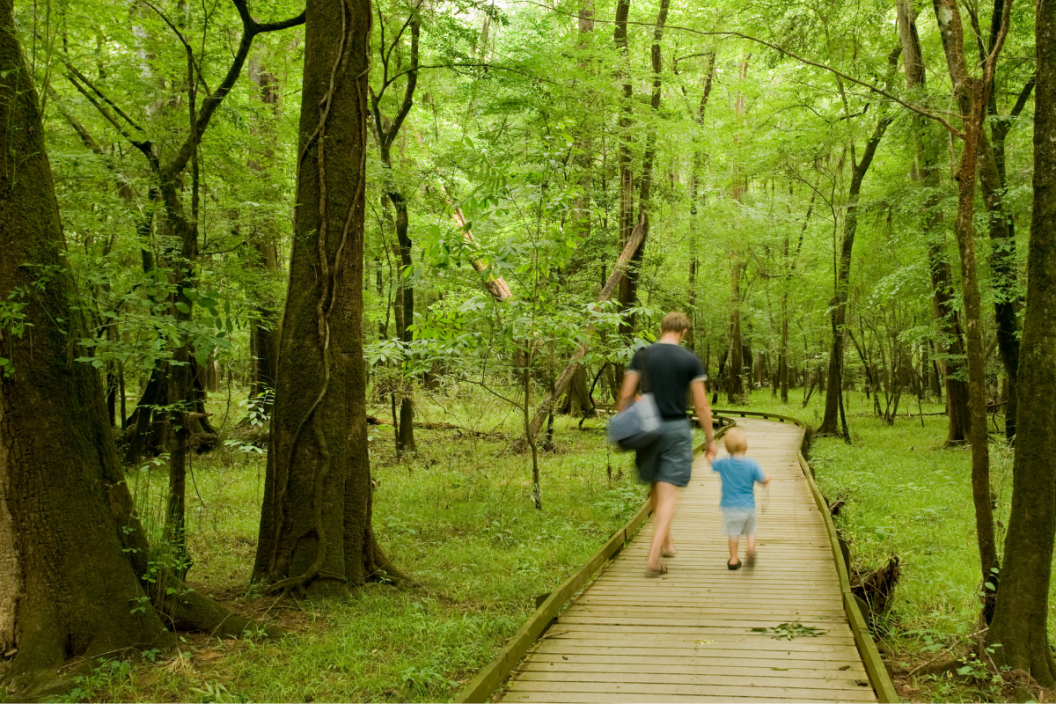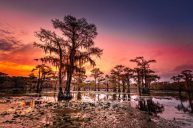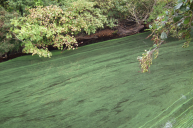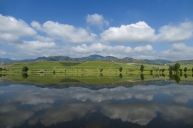Located just 18 miles from South Carolina's capital city, Columbia, Congaree National Park is the "largest intact expanse of old-growth bottomland hardwood forest remaining in the southeastern United States." With champion trees (trees that are the largest of its species), canoeing, camping, and spectacular wildlife, campers, families, and hikers alike will be delighted with all the park has to offer.
History of Congaree National Park
https://www.instagram.com/p/CDHo4e2naoZ/
For over 13,000 years, humans have been using the floodplain. Prehistorically, Sampson's Island was used as a camp, while the floodplain was used to hunt and gather. In the 18th century, settlers came to the land. In the 19th century, slaves used Congaree National park as a refuge, even using Cedar Creek to perform baptisms. Late in the 19th century, loggers came to the land to log for Francis Beidler's Santee River Cypress Lumber Company. The land was found to be too difficult to access, and by the 1910s logging had ceased. In the 1960s, there was an effort to restart logging in the area, but Harry Hampton fought for the conservancy of the land, ultimately paving the way for the National Park to be established.
Planning Your Trip
https://www.instagram.com/p/B_AHYHhHN50/
Congaree National Park is open daily, 9:00 AM - 5:00 PM, although the trails are accessible 24-hours a day, and entrance to the park is free. Pets are allowed on trails and must be leashed at all times. The main entrance to the park is on National Park Road, which will lead you to parking lots outside of the Harry Hampton Visitor Center. At the visitor's center, you will find restroom facilities, WiFi, general information, and park rangers available to answer any questions you may have. Be sure to check the water levels and weather before heading out, and dress appropriately!
Hiking Trails at Congaree National Park
https://www.instagram.com/p/CFadWP_nClw/?utm_source=ig_web_copy_link
RELATED: 21 Amazing Waterfalls Hiding Throughout North Carolina
There are 10 trails at Congaree National Park, ranging from easy to difficult. Perhaps the easiest trail is the Boardwalk Loop Trail, which has an elevated section leading down to the old-growth bottomland hardwood forest. Along the 2.6-mile loop boardwalk are benches, and it is wheelchair and stroller accessible, making it ideal for all families. For a more moderate hike, try the Weston Lake Loop, which provides stunning views of Cedar Creek, where you may catch a glimpse of an otter! Part of the 4.8 mile trail of Weston Lake Loop follows a cypress -tupelo slough (dried up river bed). A more difficult trail, and the longest at 10.1 miles round-trip, is the River Trail, where you will be led to the Congaree River. This trail may be difficult to follow in some sections, so you are urged to use caution when hiking it.
Congaree National Park Camping
https://www.instagram.com/p/CNiwKShj37B/?utm_source=ig_web_copy_link
There are two campgrounds at Congaree National Park, Longleaf and Bluff, as well as the opportunity for backcountry camping. Reservations for Longleaf and Bluff are mandatory, and can be made through Recreation.gov or by calling 1-877-444-6777. No reservations are needed for backcountry camping, however, you must obtain a free permit before camping. Permits can be obtained by emailing [email protected] and must be made 48 hours in advance to your camping trip. There are no RV hookups at any campground, all sites are for tent camping only.
Longleaf Campground
Located adjacent to the park entrance road, Longleaf is the most accessible campground at Congaree. Although there are no drive-up sites, there is a gravel parking lot. There are 10 individual sites, as well as 4 group camping sites. Individual sites can have a maximum of 8 people and 3 tents. Each site has a picnic table and fire ring, and there are 2 vault toilets at the front of the campground. There is no running water, however, water is available 24-hours a day at the Harry Hampton Visitor Center. Fees are $10/night for individual sites and $20/night for group sites.
Bluff Campground
Bluff Campground is approximately 1 mile from Longleaf, along the Bluff Trail (an easy trail). All equipment must be walked to the campground along the trail, as there is no vehicle access. There is no running water or toilets, and each site has a picnic table and fire ring. There are 6 sites, with a maximum of 8 people and 3 tents per site.
Backcountry Camping at Congaree National Park
If you are looking for a true wilderness experience, backcountry camping is for you. There is no designated area for backcountry camping, as long as you set up 100 feet away from Cedar Creek, Tom's Creek, Bates Old River, and Wise Lake. It is suggested to check the river forecast before your visit to ensure there will not be a rise in water levels during your stay. 6 campers are allowed per backcountry site, with 3 structures per site. You must be at least 300 feet from the next closest site. Hammocks are not counted as structures, however, the 6 person limit is still in effect. It is required that you follow the Leave No Trace principles, and pack up all of your belongings and trash after your stay.
Kayaking and Canoeing
https://www.instagram.com/p/CNDk4EKgl01/?utm_source=ig_web_copy_link
For a whole other experience, you can view the park by water, whether you are paddling, canoeing or kayaking. Cedar Creek is the perfect backdrop to see the wilderness from. You must provide your own canoe or kayak, as well as other safety equipment (personal flotation devices, proper clothing etc..) Check out trip ideas here. If you'd rather a guided tour, there are several outfitters with commercial use permits that will take you on a canoe tour.
Nature Found at Congaree National Park
https://www.instagram.com/p/CFwjHcQn5Pb/?utm_source=ig_web_copy_link
Visitors to the park will experience the distinctive old-growth bottomland hardwood forest, as well as an upland pine forest, making your time at the park truly unique to any other. With that, comes exceptional wildlife. From the pine trees to the cypress trees and knees, the trees alone will bring sights that will take your breath away. The animals that call the park home are plentiful, from deer, hogs, bobcats, minks, snakes on land, to otters, alligators, turtles, and fish in the water, you will want to have your camera at the ready before they scatter away. And of course, exercise caution whenever you come upon any wild animals. Do not approach them or get too close.
Download one of the parks handy wildlife guides before setting off on your trip.
Fishing
Recreational fishing is permitted in any area of the park to any individual with a South Carolina State fishing license. You will find Striped Bass, Catfish, Sunfish and more in the waters of Congaree National Park. Be sure to check out the Fishing Regulations Guide before heading to the park to fish.
Have any good travel tips or hacks? Let us know on the Wide Open Roads Facebook!




